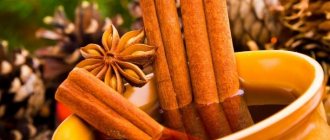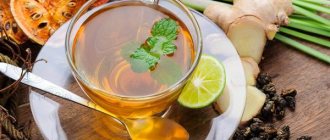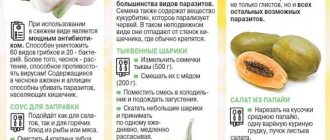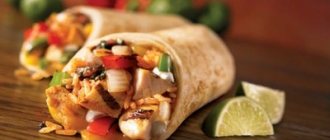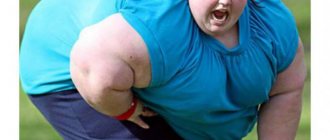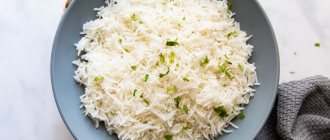Kudin tea is a way to live happily ever after. The people of China are famous for their longevity: in the country this drink has been used as a medicine for two thousand years. During the cold season, for flu and colds, instead of tablets and powders, they drink a healing infusion.
Kudin tea is a universal assistant for maintaining the body with diabetes, hypertension, metabolic disorders and other diseases. The natural origin of the medicinal drink inspires confidence to a greater extent than some well-known synthetic drugs.
The famous Kudin tea is hand-picked from the Holly variety in southern China, most often on Hainan Island and Guangxi Province. After collection, the leaves are rolled into sticks 5-7 cm long, spindles and dried. Large shoots are pressed and smoked. The processing method helps to store raw materials for a long time, without loss of quality.
Interesting fact. Holly is a low-growing tree with wide, oak-like leaves. Grows in mountainous areas with high humidity in China. It is not always possible for willing tourists to get to the plantation. The road to the area is difficult to pass.
But the most valued leaf is Shui Xiu, which is collected in early spring ; it is advisable to tear off the young top shoot. Small buds are considered powerful sources of health. There is a belief: Chinese Kudin tea was brought by the heir of the imperial family to get rid of all diseases. Only representatives of the highest social strata could drink the healing potion.
The appearance of dry Kudin leaf resembles a variety of green tea . But they are similar only in appearance when dried: the properties of the drinks differ. Some experts do not call a decoction of holly leaves tea. Green Kudin is often passed off as young green tea.
Kudin tea - what is it
Kudin tea (“bitter tear”) is an herbal drink made from the leaves of the broadleaf holly. The habitat of this plant is mountain slopes and mixed forests in southern China. This type of holly is characterized by fleshy leaves and thick branches. The height of the plant can sometimes be several meters. There are different types of Kudin depending on the time of collection of raw materials and their twisting. The tea may consist of reddish buds, young and mature holly leaves. Kudin comes in twisted, spiral, knitted, sheet, and pressed forms. Its best variety is Shui Xiu, which is obtained from tiny leaves of the plant.
The Legend of Tea
The tender buds of Kudin tea have an almost purplish hue. One legend tells about his appearance. A girl named A Xian was collecting holly leaves to prepare healing infusions. One day, a local official gave orders to send a young girl to the emperor's palace to become his concubine. However, the beautiful A Xian did not want to submit and, jumping from the cliff, fell to her death. Then people began to say that a few drops of blood splashed onto the kudin buds, so they became reddish in color, and after brewing, a slight sweetness and spicy shades appeared in their taste.
Chemical composition, calorie content, trace elements and vitamins of tea
The taste of the drink, astringent, with a subtle aroma of herbs, leaves a slight bitterness in the mouth, which turns into sweetness . It is no coincidence that Kudin means “bitter herb”; the drink got its name from the Chinese “kuding cha”.
Interesting. According to one legend, a girl who was collecting a medicinal plant was sent to the emperor as a concubine. The poor beauty did not want to be content with life in a harem: she threw herself from a high mountain and fell to her death. Droplets of the unfortunate woman's blood fell on the green shoots of the Chinese miracle healer. Therefore, the shoots changed color to red, and the taste of the drink became more tart. This is how Kudin tea received the name “bitter tear”.
The calorie content of the aroma stick is small : 16 kcal, this is equal to the number of calories in one chocolate candy. In addition, the leaves have a rich composition: the herb contains about 18 amino acids.
There are also substances:
- water-soluble vitamins: C, B1 (thiamine) and B2;
- fat-soluble: E, K, D.
- minerals: calcium and potassium, phosphorus, iron, fluorine, magnesium;
- trace elements: silicon, chromium, selenium;
- essential oils that add aroma to the drink;
- tannin theotanin.
Reference. The antioxidant content in Kudin tea is 10 times higher than in green tea.
Beneficial features
Speaking about Kudin tea, it is impossible not to talk about its beneficial properties and contraindications. The drink has been an integral part of Chinese medicine for 2 thousand years. Among the beneficial properties of Kudin:
- lowering cholesterol levels;
- prevention of heart and vascular diseases;
- burning fat, improving digestion, fighting heartburn;
- decrease in body temperature, anti-cold properties;
- memory improvement;
- lowering blood pressure, normalizing blood sugar levels;
- weakening the signs of a hangover, removing waste and toxins;
- increased vitality, etc.
Chinese Kudin tea contains amino acids, a number of vitamins (C, B1, B2, E), as well as the following elements of the periodic table: Ca, K, Fe, Mg, Cu, Zn, Na, Mn, Se.
Contraindications for use
Kudin tea has few contraindications, but they still exist, and you should be aware of them:
- Hypothyroidism (thyroid hormone deficiency).
- Chronic gastroenteritis is an inflammatory disease of the mucous membranes of the stomach and intestines, caused by various factors.
- Diseases of the gastrointestinal tract in the acute phase.
- Polycystic disease.
- Glaucoma (high intraocular pressure).
- Peptic ulcer or gastritis with high acidity.
- Individual intolerance.
About possible harm and contraindications
The benefits and harms of Kudin are not comparable in importance in the Middle Kingdom. Contraindications to taking tea may be:
- acute colitis;
- stomach ulcer during exacerbation;
- pregnancy and breastfeeding;
- children's age up to 12 years.
Note! Most often, this tea, when taken regularly but in doses, only brings benefits. No allergic reactions to Kudin were recorded. However, in order not to encounter unpleasant consequences, when purchasing, you need to pay attention to the country of origin of the tea and its composition.
Tips for use
Doctors' advice on taking Kudin:
- In case of high blood pressure and hypothyroidism, tea should be brewed and drunk before lunch, 30-40 minutes before meals. The duration of the course is individual for each patient and is approximately 7-14 days. You need to take Kudin 200 ml daily.
- For non-insulin-dependent diabetes, tea should be drunk in the morning about half an hour before meals. You can take 200-250 ml at a time. Taking the drink in the morning ensures effective normalization of blood sugar.
- Overweight people should drink Kudin 45 minutes or 1 hour after lunch. You can also drink 200-250 ml of the drink at a time. It improves the absorption of food components, ensures normalization and acceleration of metabolism.
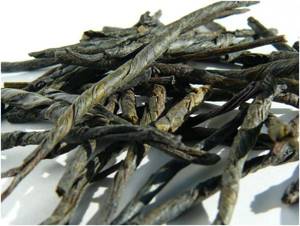
Varieties
Today, Kudin tea is represented by a wide range of types and varieties. Let's get to know some of them.
Vietnamese
Vietnamese Kuding tea comes from the northern provinces of Vietnam. The taste of the drink is rich and contains a typical bitterness. Kudin Tra Dang Cao Bang is very active, it is not recommended to use it every day: for preventive purposes, a couple of cups per week is enough. Courses of taking this tea can be prescribed to treat diseases.
From Hainan Province
Kuding Hainan tea is obtained in the southernmost province of the Middle Kingdom. In terms of taste characteristics and twist shape, it differs little from other types. It is also a light green tea with a bitter taste. If brewed incorrectly, it produces a strong bitterness.
"Spears"
Kudin “spear” tea is perhaps the most popular type. It got its name from the type of leaf curling that resembles a needle or spear in shape. The benefits of this tea can only be compared with ginseng tinctures. It has a herbaceous taste. The bitterness of the tea is light and turns into a sweetish aftertaste.
Origin story

The name kudin translates as “herb with bitterness” or “not tea tea.” This type of tea is collected in China, in its southern part. In most cases, plantations with this plant are located on mountain slopes, where there is always high humidity. At the moment, there are several varieties of this drink.
But let's move on to the description of Kudin tea itself. This is the name given to the leaves of the evergreen holly; mate tea is made from another tree of the same family (Paraguayan holly). Kudin grows in the form of a lush shrub, the height of which reaches several meters. But the length of the leaves themselves ranges from 8 to 25 centimeters.
On the shelves of supermarkets and specialty stores, kudin tea is presented in the form of dense sticks consisting of twisted holly leaves and stems. The length of such a stick is about seven centimeters. Small young leaves are most valued, but they quickly lose their strength. As for larger and older leaves, they can withstand several infusions before they become unusable. Kudin of the highest varieties has a significantly lower level of bitterness, in contrast to low varieties. In addition, high-quality tea has a multifaceted palette of taste and aroma.
There is an interesting legend about its origin, which we will now tell you.
How to brew
The method of brewing Kudin depends on its variety. Each person chooses the degree of tea saturation for himself, because... Some people like a more bitter drink, others prefer a mild taste.
The Shui Xiu variety has less bitterness. You need to brew tea according to the following scheme:
- The water temperature should be 85-90°C.
- To obtain a drink with a volume of 200-250 ml, use 3-5 g (1 heaped teaspoon) of tea leaves.
- First, young leaves are filled with hot water, which must be drained after about 5 seconds. This is done so that the leaves open up and fill the surrounding space with their aroma.
- Then the leaves are again filled with prepared water and brewed for about 1 minute.
- Kudin tea can be brewed several (usually 3-5) times. In this case, the duration of each subsequent brewing should increase by 1 minute.
The preparation of the drink from Kudin’s “needles” occurs differently. The most important thing in brewing such tea is not to exceed the maximum dose, which is 1-2 “spears” per cup.
Failure to do this will result in an overly bitter drink and possibly complete disappointment.

Recommendations for brewing “needles” are as follows:
- First, it is advisable to try the tea yourself; it is not worth treating guests at the stage of getting to know Kudin. To do this, you need to brew only 1 “needle” in your cup.
- For brewing purposes, water at a temperature of 80°C is added. If you infuse the “spear” in boiling water, you will get a drink that is most likely not suitable for consumption. To enjoy the subtlety of taste and noble aftertaste, Kudin can be brewed with water at a temperature of 50°C.
- The “needles” are filled with water and infused for no more than 20 seconds. The first brew is drained.
- The next brewing also continues for about 20 seconds, after which the drink can be drunk.
The most common varieties of Kudin, its beneficial properties and brewing rules are described in this video:
How to choose and store correctly
In order not to run into a fake, you should purchase raw materials only from trusted suppliers:
- The seller has been working on the market for more than 5 years;
- It is better to organize delivery directly from China (Kudin is produced only there).
Before purchasing, you need to carefully study the composition. It should only include leaves, buds and twigs of broadleaf Holly. Holly from Paraguay is used to produce another variety of Mate.
Spiral and leaf varieties will be more bitter. The pressed variety has great softness with a fruity undertone.
Raw materials must be packaged in sealed packaging. They help the taste last longer. The petals should be smooth, without breaks or cracks. There should be no tea dust. These signs indicate a violation of the technological process of production, transportation and storage.

Choosing the right kudin tea
After opening the package, Kudin should be stored in a dry place, protected from light. Metal or wooden jars with a tight-fitting lid work well for storage. Storage near spices and foods depleted of odors is not recommended. So that the future decoction does not give off them.
How to drink Kudin: features of use
As a rule, sugar and other components are not added to this drink. If tea is recommended by doctors, but the body does not accept it in its natural form, you can add a little stevia.
To prevent diseases, you do not need to drink Kudin more than 2 or 3 times every 7 days. A couple of cups, regularly drunk over a week, can energize a person, improve his metabolism, etc. It is not recommended to take Kudin on an empty stomach.
For weight loss
You can drink Kudin tea for weight loss. For this purpose, it is taken in the morning or afternoon at the same time as a meal rich in protein. In the morning, you can eat, for example, cottage cheese, sweet fruit and drink Kudin. Also, tea can be taken separately some time after breakfast, but not on an empty stomach. Sometimes you can come across opposite information, which says that a cup of this tea can replace breakfast or dinner, and two balanced meals a day should be taken.
During pregnancy
Kudin affects the human nervous system. For this main reason, it is better for expectant mothers to refrain from drinking this tea.
Is it possible for children
In China, children under six years of age are not allowed to drink Kuding tea. Russian pediatricians have set the bar higher: they do not recommend taking it to children under 12 years of age. After this age, parents can start giving their child bitter tea in the amount of just one spoon every morning.

Reviews
Reviews from real customers left on our website through the comment form:
Marina, Kirov: “Having tried Kudin for the first time, I thought: how can you even drink this. It seemed just mega bitter to me. But then, after a few weeks, I realized that I almost no longer felt the bitterness, but only felt a sweetish-minty aftertaste. From my experience I will say that this is also an excellent helper in the fight against colds - better than Coldrex. For those who are just planning to try this drink, I advise you to start with a very weak “tea”; it is better to use, for example, 1 “spindle” per mug and steep for only 2 minutes.”
Elena, Perm: “You can’t call Kudin beautiful, delicious, aromatic and rich. It seems to me that this drink is so bitter that it can be consumed with great difficulty. Despite the fact that I tried a bunch of brewing methods, the result was the same - the tea was bitter. However, I still like this drink. Of course, not for the taste, but for its beneficial properties. Having caught a cold, I start drinking Kudin. In the morning I wake up healthy again.”
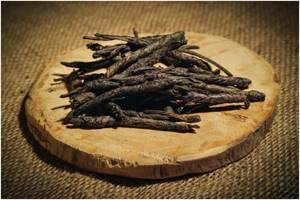
Many people will not like Kudin tea. Its bitterness often repels people who love delicious hot drinks. But, despite his originality, Kudin wins hearts. After all, it is, first of all, a natural preventive remedy for many diseases. However, in an ardent desire to become healthy, you still cannot neglect the permissible doses.
Features of the drink
In folk medicine, a healing decoction of holly, the use of tea is important for restoring potency and slowing down the aging process . They use the property of bitter herbs to tone the body. Gorky Kudin is a practical, proven remedy for treating coughs. Helps cope with the consequences of radiation exposure.
In cosmetic procedures, they resort to healing bitterness to regenerate the skin . Make ice cubes from the prepared infusion and wipe the skin of the face, neck and décolleté. A scrub made from crushed tea leaves with salt perfectly moisturizes and tightens.
It is a good helper in the fight against excess weight . The basis is the property of tea to relieve swelling and remove toxins from the body. To lose weight, brew greens 40-50 minutes after eating, take no more than one glass of healing infusion. The herb will help digest food and speed up metabolism.
